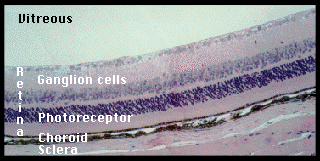|
From rxpgnews.com ARMD
The Food and Drug Administration (FDA) approved Lucentis (ranibizumab injection) for the treatment of patients with neovascular (wet) age-related macular degeneration (AMD). Lucentis is the first treatment which, when dosed monthly, can maintain the vision of more than 90 percent of patients with this type of AMD. Lucentis is a new molecular entity (NME), meaning it contains an active substance that has never before been approved for marketing in any form in the United States. Lucentis will be the first FDA--approved product to provide prescription information in the new format for prescription drug package inserts, to provide professionals and consumers clear and concise prescription information.
Lucentis, a biologic product, administered by injection into the eye, was shown to be safe and clinically effective in three multicenter, randomized studies of patients representative of the population usually affected with AMD. In clinical trials, nearly 95 percent of the participants who received a monthly injection maintained their vision at 12 months compared to approximately 60 percent of patients who received the control treatment. Approximately one-third of patients in these trials had improved vision at 12 months. In a single study carried out for 24 months, these findings have been maintained with continued monthly dosing. The most commonly reported adverse events included conjunctival hemorrhage, eye pain, floaters, increased eye pressure and inflammation of the eye. Serious adverse events were rare and often related to the injection procedure including endophthalmitis (severe inflammation of the interior of the eye), intraocular inflammation, retinal detachment, retinal tear, increased eye pressure and traumatic cataract. All rights reserved by www.rxpgnews.com |
